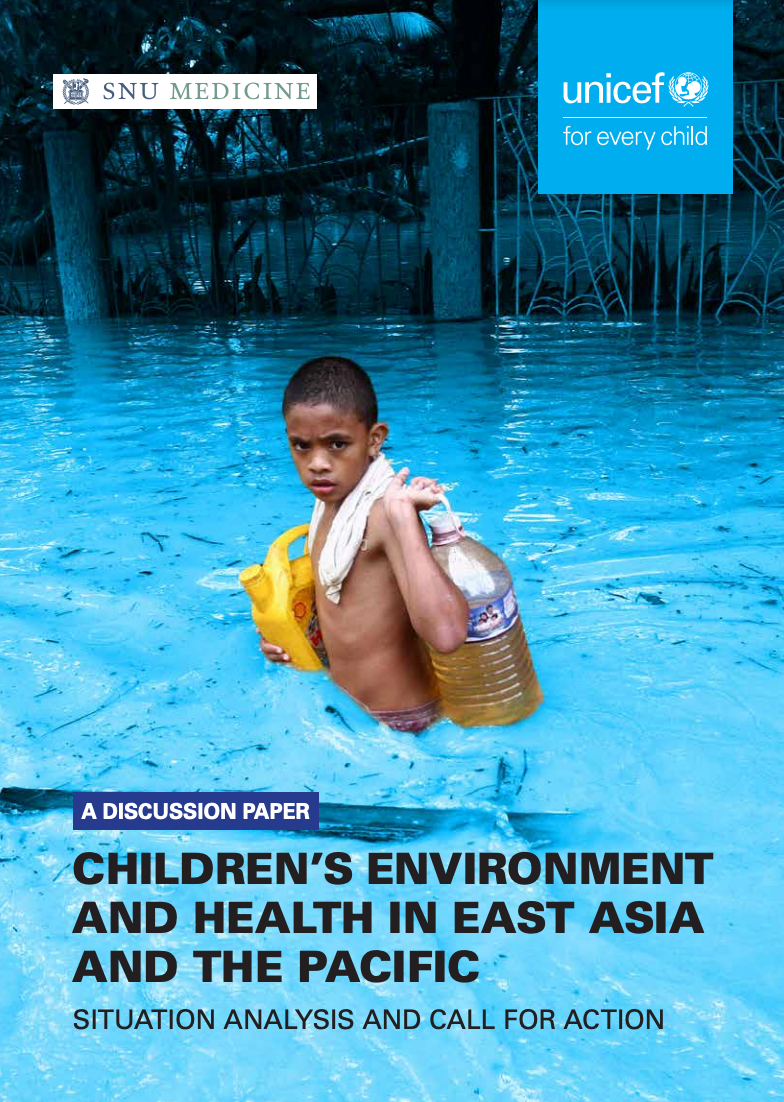Children’s environment and health in East Asia and the Pacific situation analysis and call for action
Children in East Asia and the Pacific are faced with multiple challenges posed by the climate crisis, environmental pollution and rising inequity. Today more than one in four childhood deaths under five years of age are attributable to unhealthy environments. Twenty-six per cent of the 5.9 million under-five deaths per year are attributable to the impacts of environmental factors such as air pollution, lack of adequate water and sanitation, hazardous chemicals and increasing exposure to the impacts of climate change. Countries in the East Asia-Pacific region have limited capacity and resources to deal with these emerging and persistent environmental health challenges. Although some improvements have been made in children’s health in recent decades as a result of improvements to water and sanitation infrastructure and reduced indoor pollution in some settings, new and persistent threats to children’s health are emerging in the 21st century. Climate change is increasing the frequency and intensity of extreme weather events. Slow onset changes such as sea-level rise and environmental pollution are worsening with an increasing use of hazardous chemicals and pollutants. Unsustainable urbanization is both increasing air pollution and crowding populations into poor urban settlements with limited access to safe housing, water and sanitation and limited access to health care. Poor households often live in environmentally polluted and climate hazard-prone areas.
In the meantime, despite the environmental and climate crisis affecting children’s health, child and maternal health policies and interventions still mainly tend to focus on treatment and very little investment is made on prevention and reduction of environmental risks. There is a lack of integrated policy and investment practices addressing environmental and climate risk factors to child and maternal health in the region. This currently limited integration of child health and environment policies call for a much better understanding of the links between the environment and child health. In this context, UNICEF East Asia Pacific Regional Office has, in cooperation with the Seoul National University College of Medicine, undertaken a regional situation analysis of the available data and evidence on the links between environmental risk factors and children’s health.
